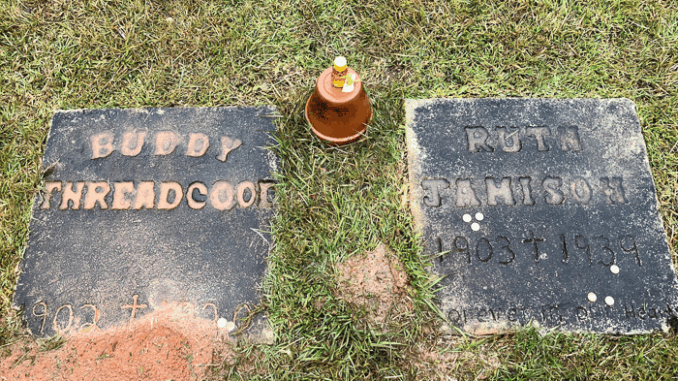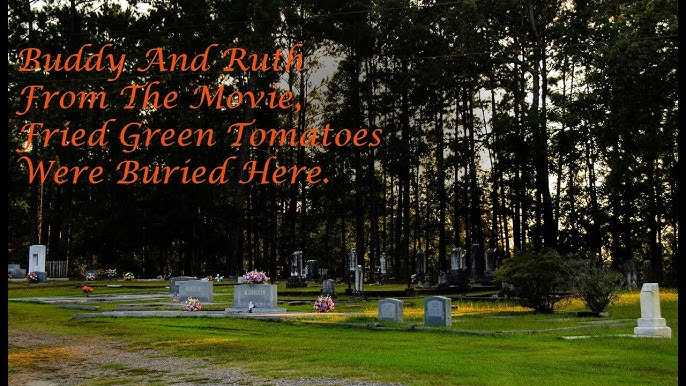
The Silence After the Storm
Death arrives quietly in Fried Green Tomatoes. When Ruth Jamison dies, the film doesn’t linger on spectacle or dramatized suffering. Instead, it moves with restraint, giving the audience space to sit with the loss, much like those left behind must do.
Her burial scene is not just a goodbye—it is a culmination. A tribute. A reckoning.
After all the years of shared work, laughter, struggle, and healing at the Whistle Stop Café, Ruth’s death marks the end of an era for the community—and for Idgie, it threatens to end her very sense of self.
But the burial scene resists melodrama. It instead becomes a sacred, quiet homage to love that defied social rules and expectations. A love that had no name, but every meaning.
The Ceremony: A Community in Mourning
The funeral is simple, as Southern funerals often are. A gathering of neighbors. Flowers. A preacher’s voice gently reading scripture. But within that formality, something deeper hums.
Everyone knows that Ruth and Idgie were more than friends. They shared a life, a home, a business, and a child they raised together. And in that moment of communal grief, no one questions Idgie’s place at the center of it all. She stands closest to the casket. She walks with Ruth’s son. She receives the condolences.
No one dares say it out loud, but they all understand.
The scene gives us no grand declaration. No confessional monologue. But the body language tells the truth: Idgie is Ruth’s widow in all but name.
Idgie’s Grief: What Remains When the Heart Is Gone

For a character defined by mischief, resistance, and irreverence, Idgie is hauntingly still at the graveside. Her usual armor—humor, bluster, nonconformity—falls away. In its place is quiet devastation.
She does not cry loudly. She does not collapse. But the grief radiates from her in waves. The woman who once faced down trains, beehives, and corrupt judges now stands defenseless against the finality of the earth being filled in over Ruth’s casket.
It’s not just the loss of a partner. It’s the loss of the one person who truly saw her.
Symbolism in the Earth and Sky
The burial takes place under a broad, open Southern sky. The land stretches around them—still, expectant. In Southern Gothic tradition, the land often mirrors the emotional truth of the moment, and here it feels reverent. The same soil that fed the café’s vegetables and supported the town now receives one of its most beloved souls.
The act of burial is an act of letting go, but also one of trust. Ruth returns to the earth, to the land that gave her freedom. And Idgie, by standing witness, affirms that nothing truly loved is ever lost.
The silence becomes sacred. The absence becomes presence.
The Final Gift: A Life Well Lived
Before her death, Ruth left behind not just memories, but meaning. She raised her son with kindness and integrity. She co-founded a café that served both food and dignity. She healed not only herself but gave others a model of what quiet resilience looks like.
Her death, while inevitable, is not a defeat.
The burial scene honors this truth. Even as her body is lowered into the ground, her legacy rises. In Idgie. In her son. In the community that learned to embrace difference because Ruth and Idgie dared to live openly and generously.
Evelyn’s Reflection: The Story Echoes On
In the film’s present-day narrative, Evelyn Couch absorbs Ruth’s story through Ninny’s narration. The burial becomes not just a scene from the past, but a lesson passed forward. Evelyn sees in Ruth’s death the cost—and the reward—of living authentically.
The pain Evelyn feels isn’t just for Ruth. It’s for every version of herself she never dared to become. But by witnessing this love story—by standing at this symbolic graveside—Evelyn begins to rise.
The burial, in this way, isn’t just about laying one woman to rest. It’s about awakening another.
A Subversive Eulogy Without Words
There is no spoken eulogy in the scene. No one stands up to declare the nature of Ruth and Idgie’s relationship. But in the quiet, the truth is more potent than any sermon.
The way Idgie’s hand lingers on the casket. The way the camera frames her face in close-up as soil hits the wood. The way the townspeople glance at her not with suspicion, but solidarity.
This is the eulogy.
It is lived, not spoken.
The Gravity of Chosen Family
The burial of Ruth, more than any other scene, confirms the radical heart of Fried Green Tomatoes. It’s a film that understands that the deepest relationships often defy easy categorization. That family is not always biological. That love can be both quiet and revolutionary.
Idgie and Ruth’s bond was not written in marriage vows or sealed in legal documents. It was forged through grief, laughter, and devotion. And at the graveside, that bond remains unbroken.
Because real love doesn’t die. It transforms.
Conclusion: A Quiet Farewell, A Lasting Echo
The burial of Ruth in Fried Green Tomatoes is a scene of profound restraint and power. It resists spectacle in favor of truth. It offers no easy comfort, but instead an honest portrayal of loss—and the endurance of love beyond the grave.
For Idgie, the world will never be the same. But she will carry Ruth with her, in the café, in the child they raised, in the freedom they built together.
And for viewers, the scene becomes a meditation on grief, legacy, and the families we choose.
Because in the end, the deepest farewells are not shouted. They are whispered through memory, etched in the soil, and kept alive in the stillness of our hearts.
